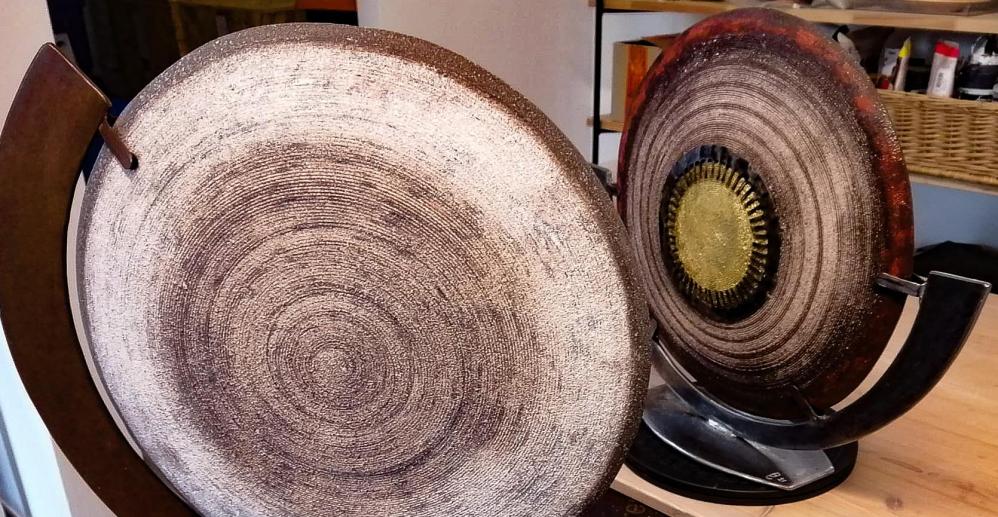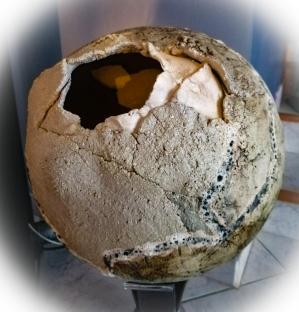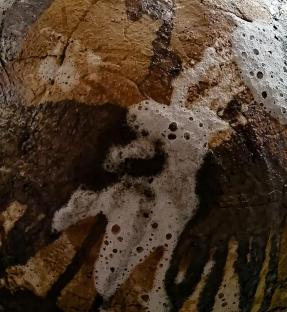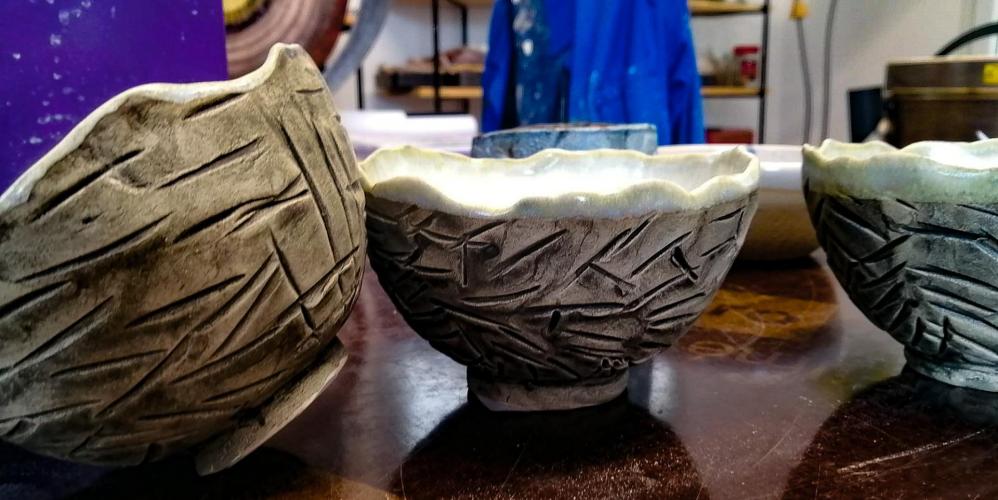Bruno Cadet, sculptor
- Par nbesse
- Le 31/03/2025
- Dans Interviews and portraits
FR - We are heading for Cabrières to discover the mineral world of sculptor Bruno Cadet.
With ceramics, steel and terracotta, the artist's works are a reminder of the origins of the earth.

 LET'S CHAT
LET'S CHAT
Bruno Cadet has been a full-time artist for more than 15 years, and welcomes us to his workshop to show us his work.
Although design and crafts have always been a part of his life, the sculptor has taken up the art of ceramics at various courses, learning different techniques such as raku, mixed earthenware (a technique that originated in the Luberon region) and enamelling in the Haute-Loire, Cévennes and Gard regions.
Inventing his own artistic touch, Bruno Cadet uses ceramics, porcelain, stoneware and steel, all of which combine powerfully to produce a disturbing, singular result one could say.
At first, he worked on sheet metal engraved with a grinder, then on raku ceramics, chawan bowls, Japanese-style boxes, bottles with rough exteriors and delicately enamelled interiors.
Then came the series of planets and comets, or rather meteorites. The surfaces are both rough and smooth, revealing a somewhat rock-like filigree, sometimes as deep as a scar, sometimes just surfacing... We're not far from the cave art motifs of our distant ancestors.
The colours, too, are a reminder of the sculptor's inspirations and his skilful use of dyes.
|
The quartz point, 573°... The moment when the risk of the material exploding is intense.
|
 Planets and comets are named after real celestial bodies that have fallen to earth, such as the La perdida meteorite, composed of iron and nickel, discovered in 1965 in the aptly named Campo del Cielo (Field of Heaven), or El Mocoví, in Argentina's Chaco province.
Planets and comets are named after real celestial bodies that have fallen to earth, such as the La perdida meteorite, composed of iron and nickel, discovered in 1965 in the aptly named Campo del Cielo (Field of Heaven), or El Mocoví, in Argentina's Chaco province.
‘It's a gradual process, over time, as the work is born under my fingers,’ adds Bruno Cadet. From the mould that forms the cradle of the work to the assembly of its various parts, it's a ballet that gradually gives birth to the hoped-for object. Spheres and circles, symbols of the infinite... and the basis of the artist's fertile imagination, as she skilfully blends earthenware, stoneware, clay, porcelain and enamel, all of which merge, fuse and intertwine to form a single structure.
The opening left at the end of the meteorites' journey is a reminder of the impressive shock to which the real stars were subjected when they hit the ground. Bruno's small El Tonocote meteorite, for example, looks as if it has been wounded by two gaps, as if it has exploded, as if a fragment is still wandering around, aimlessly...
How long does it take to complete such a technical feat? ‘7 hours for the biscuit at 950°, then the second firing for the enamel at 1250°, 1280° depending on the clay and enamels’, Bruno explains.
The result is works such as this superb Alcyone, named after the daughter of the titan Atlas and the Oceanid Pleioné, a virtuoso combination of ceramic and the waxed steel on which it is based; Himalia, named after the nymph of the Greek island of Rhodes, made entirely of glazed stoneware and glazed steel; and Ganymede, named after ‘Jupiter's natural satellite, in glazed ceramic’...

Bruno Cadet has also tried his hand at Japanese culture, with chawan bowls for the tea ceremony. Stoneware, oxide juice, engobe, transparent enamel - a skilful blend learnt from Denis Grazon and reworked and personalised, as with these black enamelled stoneware boxes.
Many thanks to Bruno Cadet for his warm welcome and collaboration with UzEssentiel.com.
The right address: Look for Bruno Cadet on Instagram.





